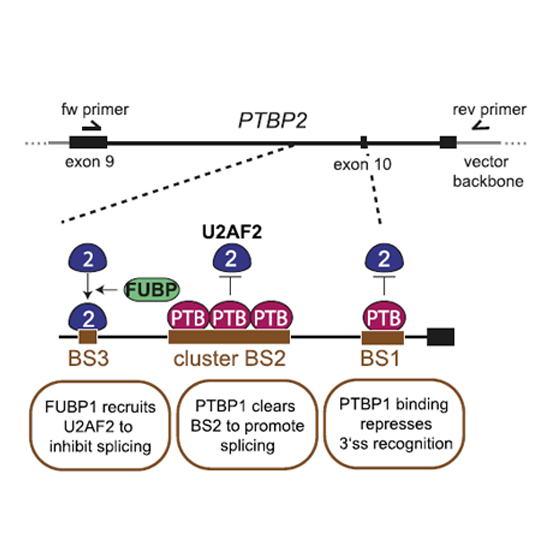In vitro iCLIP-based modeling uncovers how the splicing factor U2AF2 relies on regulation by cofactors
01-Apr-2018
Genome Res. 2018. 28: 699-713, doi: 10.1101/gr.229757.117
Genome Res., online article
Alternative splicing generates distinct mRNA isoforms and is crucial for proteome diversity in eukaryotes. The RNA-binding protein (RBP) U2AF2 is central to splicing decisions, as it recognizes 3′ splice sites and recruits the spliceosome. We establish “in vitro iCLIP” experiments, in which recombinant RBPs are incubated with long transcripts, to study how U2AF2 recognizes RNA sequences and how this is modulated by trans-acting RBPs. We measure U2AF2 affinities at hundreds of binding sites and compare in vitro and in vivo binding landscapes by mathematical modeling. We find that trans-acting RBPs extensively regulate U2AF2 binding in vivo, including enhanced recruitment to 3′ splice sites and clearance of introns. Using machine learning, we identify and experimentally validate novel trans-acting RBPs (including FUBP1, CELF6, and PCBP1) that modulate U2AF2 binding and affect splicing outcomes. Our study offers a blueprint for the high-throughput characterization of in vitro mRNP assembly and in vivo splicing regulation.











